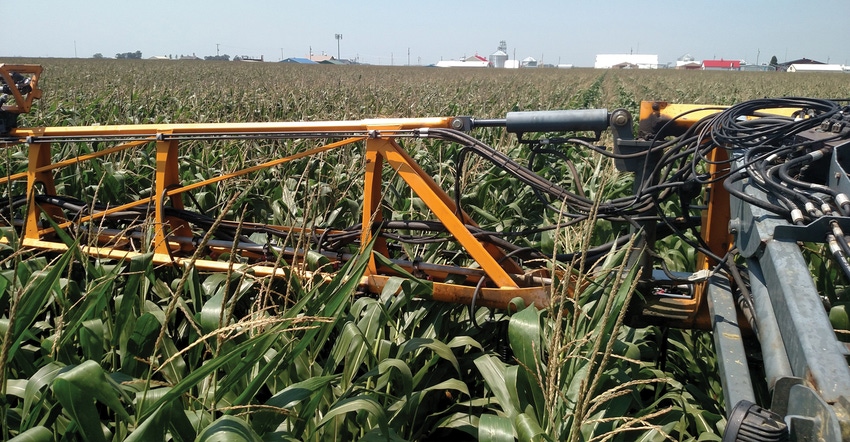
With Husker Harvest Days right around the corner, most of the focus is on what happens during those three days in September — including the new equipment, tools and technology. However, there’s plenty going on at the HHD show site west of Grand Island all throughout the growing season.
Every year, host farmer Jason Luebbe conducts several different trials on the show site’s 700 acres of corn leading up to the show in September. As host farmer, Luebbe has a front-row seat to some of the latest and greatest equipment and technology — and this year, he’s continuing some in-season nitrogen trials he’s conducted for several years, including fertigation trials and trials using 360 Yield Center’s Y-Drops. This year, however, he’s doing a variable-rate trial using Y-Drops.
“When you fertigate, you can’t really variable-rate your fertilizer. So, we’re doing a comparison of fertigation through a pivot, and we’re variable-rating the other side on more productive spots. There’s no sense in putting additional fertilizer on a spot that’s made 200 the last several years, and you can’t do any better.
So, instead, you apply that fertilizer on a place that has more potential for improvement,” Luebbe says. “I don’t like putting fertilizer where it’s not needed.”
These rates might range anywhere from 10 to 20 gallons per acre through the Y-Drops, compared to a flat rate with fertigation. Using 28-0-0-5, that’s about 31 to 62 pounds of nitrogen per acre. For these trials, each field receives the same amount of total N, but the number of gallons or pounds applied varies among the fields with variable-rate prescriptions.
“These fields are well-known for having sandy streaks or gravel streaks. It doesn’t matter what you do to a gravel streak; you’re always going to have leaching. I haven’t tested it at the HHD site yet, but on some of my farms we’re playing around with nitrogen stabilizers,” Luebbe says. “When we put our big [shot] of fertilizer on, we put a stabilizer with it. I’ve also made applications through the Y-Drops using 28-0-0-5, with a stabilizer and without. We try to be a good steward of the land, and I think any farmer wants to be that way if it’s cost-effective.
“Things are super-tight right now. We’re not talking dollars put acre, we’re talking negative dollars per acre,” he adds. “So, it’s all about how much the least amount of money you can lose this year is, to stay in the ring for next year.”
Learn more about 360 Yield Center’s Y-Drops by visiting 360yieldcenter.com, or by visiting 360 Yield Center at Lot 768 at Husker Harvest Days.
About the Author(s)
You May Also Like






